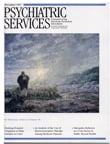Manual of Therapeutics for Addictions Getting Beyond Sobriety: Clinical Approaches to Long-Term Recovery
These two books symbolize the diverse backgrounds and interests of those seeking to understand, diagnose, and treat the addictions. On casual reflection, the two volumes would seem to have little in common; however, they share certain fundamental concerns about addictive disorders and offer their respective audiences informed and thoughtful guidance.
Manual of Therapeutics for Addictions is an authoritative, remarkably comprehensive, and succinct guide for the clinician. The manual describes in clear, practical terms approaches to the diagnosis and treatment of the broad range of addictive disorders. It provides the reader with a basic understanding of the etiology of disorders, a more comprehensive understanding of diagnosis, and a guide to treatment.
The manual includes details often lacking in similar volumes—for example, on the medical complications of the addictions; the actual operation of Alcoholics Anonymous, Narcotics Anonymous, and 12-step programs; and others. There are chapters on women, cultural considerations, gambling, eating and sex addictions, and treatment efficacy. Chapters that deal with intoxication and withdrawal are comprehensive and even afford the reader an understanding of biological mechanisms.
Many of the chapter authors, of whom there are 29 in addition to the editor-authors, are recognized leaders in the field of addiction. The only significant criticism is the inevitable redundancy in some of the treatment chapters, but it has been kept to a minimum. The volume is well organized and indexed.
The material is presented with enough sophistication to be of use to all but the most expert of audiences, and even then it exposes the reader to topics such as managed care and forensic and ethical issues that will likely be of interest. The manual's predominant perspective is that of the medical model of the addictions. In this regard, the introduction is noteworthy for addressing the ambiguities of the terms abuse, dependence, and addiction in a manner that recognizes how much work remains in the field to gain clarity and direction for both diagnosis and treatment.
The chapters on treatment emphasize approaches that are focused and more biological and do not dwell on alternative or more psychodynamic approaches. Thus there is little discussion of the intensity of work that some families may need or the benefit of some more elaborate psychodynamic approaches with certain patients. This relative lack of emphasis is perhaps understandable, and it serves to underscore the need for works such as that of Clemmens.
Rather than following the more staccato approach of the manual, Clemmens' Getting Beyond Sobriety provides an in-depth view of the treatment of the alcoholic with particular reference to issues associated with long-term recovery. As a recovering professional, Clemmens provides an empathic, clear model of a gestalt approach to alcoholism treatment, and in the process he helps to define the differences and perhaps limits of the medical model of the addictions.
It does not do the volume justice to overemphasize its gestalt focus. The author clearly delineates a developmental approach that emphasizes stages in the recovery process. Further, he proposes that for the addict, alcohol and drug use facilitates the modulation of sensation that has interpersonal and intrapersonal advantages, although it is dysfunctional outside the immediate sphere of the addict. Great value is placed on the psychological development of the individual.
This formulation differs in form and complexity from the popular "self-medication" hypothesis and is more reminiscent of the interpersonal dynamics elucidated by theorists such as Leston Havens. In contrast to the popular behavioral and pharmacologic modes of treatment for alcoholism and the addictions, this volume gives the reader a lucid explication of the dynamics of alcoholics and other drug addicts, their life situations, and their treatment needs.
The theoretical formulation, based on gestalt principles, informs but does not overshadow basic information of use to anyone interested in the treatment of alcoholism and the addictions. The material is clear and free of rhetorical flourish, and it provides the therapist with a perspective that is sure to stimulate new thinking. Of particular importance is the material describing the long-term consequences of alcoholism and the therapeutic needs of the long-term abstainer. Thanks to the liberal use of vignettes, the reader comes away with a more complete understanding of recovery.
Both volumes deal with diagnosis as well as treatment. Manual of Therapeutics for Addictions, as a multiauthored work, presents 24 chapters on diverse topics with little or no overlap. This is testimony to a well-edited and well-conceptualized volume. Such a comprehensive volume could indeed serve as the only diagnostic and treatment resource for most clinicians. Getting Beyond Sobriety is remarkable for the author's concern for placing the gestalt approach in the broader context of treatment. Thus the reader who may be naive about other treatment approaches comes to understand, in a relatively objective manner, the full range of treatment for alcoholism and addictive disorders.
Are these two volumes so disparate? The authors of both volumes took great pains to underscore what remains unknown about addictive disorders as well as what information is at hand. Both question the current state of our ability to adequately diagnose and definitively treat addictive disorders. In both, it is possible to see the struggle to gain an understanding of the addictive process.
Dr. Belfer is professor of psychiatry in the department of social medicine of Harvard Medical School in Boston.



